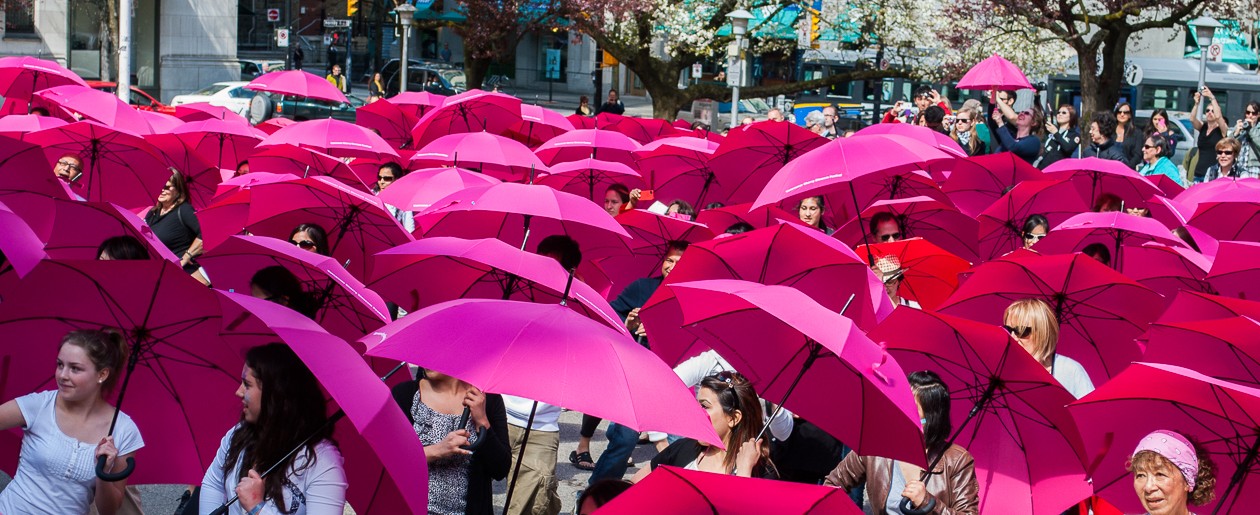[ab-strak-shuh n] the art and the act is the latest exhibit at the Gordon Smith Gallery in North Vancouver. As the title states the works are all abstractions in a variety of media by many of Canada’s most well respected artists, including Alan Wood, Jack Shadbolt, Jane Ash Poitras, Guido Molinari, Jean McEwan, Betty Goodwin, Graham Gillmore, Etienne Zack, Gordon Smith, Toni Onley and Douglas Coupland. The exhibition runs until April 13, 2017.
As always at the GSG the exhibition is well laid out with plenty of breathing room around the exhibits. Right on entering are a couple of George Rammell’s Archer’s Paradox paintings with an accompanying video running showing how he made the paintings. The two paintings on display were actually made just outside the gallery. His method can be seen in this video below.
I included a short write up on George Rammel on my TAOP blog which can be seen here so I won’t repeat myself as that was also about the Archer’s Paradox.

There were a couple of works that reminded me of Robert Rauschenberg’s collage oevres, but unfortunately I did not manage to get the name of the artist or a photograph.

Douglas Coupland is a very prodigious artist. He has written thirteen novels which have been published in most languages. He has also performed for the Royal Shakespeare Company and is a columnist for the Financial Times of London, as well as a regular contributor to e-flux, DIS, Vice and the New York Times. He has exhibited his wide range of works at the Vancouver Art Gallery, The Royal Ontario Museum, the Museum of Contemporary Canadian Art as well as in galleries in Rotterdam, Munich and Paris. He is also an Officer of the Order of Canada. Much of the public art work around my city can be attributed to Coupland.
Douglas Coupland’s Planets series were vibrant and had a sense of motion to them that I had not expected. When viewed close up the brush strokes followed through with the motion and created a visual depth which cannot be seen on the photograph – a definite mood lifter on such a gray and rainy day.

Gordon Smith is one of the doyens of the Canadian art world. His history is so extensive that it is too long for this post, but I have included a link for those who are interested. I found Gordon Smith’s paper mache quite endearing. This collection was the featured art on the Gallery’s website and I had envisioned these pieces to be quite large. Instead they are probably no larger than 12 – 18 inches in height and were displayed rather low down. I have developed a bit of a fascination for birch forests, especially in certain parts in the Lower Mainland, where the forests resemble ghost-like apparitions during the winter season. I found this collection to be rather reminiscent of this and was quite taken with the brightly coloured oranges and blues that appear in this work, which tend to strike a bit of a discord when compared to the real thing.

Angela Grossman is another Vancouver visual-based artist whose work examines gender identity and themes around social margins. In the little balcony gallery upstairs I came across an etching on inkjet by Grossman. In this piece Grossman has combined photography with markmaking. According to the Gallery information she handmade the paper that the work is printed on as well. The work is a metaphor for the coming of age, as the two young companions emerge ready to tackle life.
The exhibition was not overly abstract and the images were all interesting and engaging with just the right amount of abstract for a non painter student or audience to appreciate. Some of the pieces required a little more introspection, especially when I found a similarity with other painters or photographic work I have previously seen and I was pleased to be able to make the connections.
It was engaging to see how different artists interpret abstract art. The works ranged from sculptures, paintings, sketches, photographic (only one), collage and mixed media.
Abstract art seeks to break away from traditional representation of physical objects. It explores the relation of forms and colours. The exhibit speaks to both figurative and non-figurative abstract works and includes some of the finest examples of abstract art in our country.
Gordon Smith Gallery
Reference List
Rammel, George Archer’s Paradox II [online] Creat. Artists for Kids. Gordon Smith Gallery of Canadian Art. 4 min 10 secs. Available at: https://www.youtube.com/watch?v=tg-jja7eUGk [Accessed 21 February, 2017]
Gordon Smith Gallery (2016) In the Main Gallery [online] Available at: http://www3.gordonsmithgallery.ca/Gallery/Exhibitions/Pages/default.aspx [Accessed 21 February, 2017]











